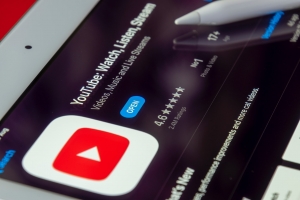If you’re building an audience in 2025, the smartest lever isn’t posting more—it’s crossposting better. Crossposting is the practice of publishing the same (or lightly adapted) content across multiple platforms to maximize reach, consistency, and ROI. Done right, it compounds results: more impressions, higher engagement, and steadier growth without burning out your team.
This guide explains what crossposting is, why it works, where it can backfire, and a step-by-step workflow to make it effortless. You’ll also get practical formats, platform-specific tweaks, and a simple checklist to run before you hit publish.
What Is Crossposting (and Why It Works)
Crossposting means taking a single piece of content—like a short video, carousel, or blog post—and distributing it across several channels such as Instagram, TikTok, YouTube, LinkedIn, X, and Facebook. The goal is reach efficiency: extracting more value from every idea you produce.
Why it works:
- Audience fragmentation: Your followers aren’t in one place. Crossposting ensures your message meets them where they already spend time.
- Algorithm variance: Different platforms reward different signals. The same idea can underperform on one network and go viral on another.
- Consistency without burnout: You maintain a steady cadence while saving creative energy for high-impact experiments.
- Compounding assets: Evergreen posts continue to attract views and clicks across channels over time.
Crossposting vs. Spamming: The Golden Rule
Crossposting isn’t copy-pasting blindly. The golden rule is native adaptation: keep the core message, adjust the wrapper.
- Hook & framing: Keep the first 1–2 lines platform-native (e.g., curiosity hook for X, benefit hook for LinkedIn, punchy, fast-paced hook for TikTok).
- Format & length: Respect character limits, aspect ratios, and caption style.
- CTA & links: Use calls-to-action that fit the platform (profile link on Instagram, in-caption link for LinkedIn/X, description link on YouTube).
- Hashtags: Use a small, relevant set—don’t paste a 30-hashtag block everywhere.
Smart crossposting is about message-market fit, not carbon copies.
Where Crossposting Shines
- Educational creators & B2B brands: Repurpose tutorials, frameworks, and swipe files into short posts and carousels across LinkedIn, X, and Instagram.
- Product launches: Announce once, adapt for each channel, then pin the best performer.
- Weekly series: Share recurring segments (e.g., “Tool Tuesday” or “Creator Playbook”) on multiple platforms for predictable touchpoints.
- Short-form video: Edit one master cut into platform-specific versions (9:16 for TikTok/IG Reels/YouTube Shorts, square for Facebook).
When Crossposting Can Hurt (and How to Avoid It)
- Platform mismatch: A dense LinkedIn essay pasted into Instagram without visuals will flop. Solution: use a carousel or short video summary.
- Duplicate timing: Posting identical content everywhere at once can cannibalize momentum. Solution: stagger by 24–72 hours and “ladder” attention across channels.
- Ignoring comments: Crossposting without engagement is a broadcast, not a conversation. Solution: batch 15 minutes of replies per platform after publishing.
- Watermarks & compression: Re-upload the original file; avoid recycled videos with platform watermarks.
A Simple 6-Step Crossposting Workflow
- Start with a Master Idea
Write the thesis in one sentence: “This post shows creators how to script videos 2× faster.” - Draft a Master Asset
Make a single, high-quality piece (script, blog, or video). Keep a clean, watermark-free source. - Create Platform-Native Wrappers
- X: 1–3 punchy posts or a short thread.
- LinkedIn: 7–12 line narrative with a strong lead.
- Instagram: Reel + 2–3 line caption and 3–5 hashtags.
- TikTok: Hook in the first 1.5 seconds; add on-screen text.
- YouTube Shorts: Benefit-driven title; relevant keywords in description.
- Facebook: Square video or image + one clear CTA.
- Schedule & Stagger
Publish on your primary channel first, then cascade to others over 1–3 days. This lets you refine hooks based on early data. - Engage with Intent
Reply fast for the first hour. Pin strong comments. Redirect conversations (e.g., “Full tutorial in the description.”) - Measure & Remix
Track views, saves, shares, and click-throughs. Expand winners into long-form, email, or lead magnets.
Platform-Specific Adaptations at a Glance
- Hooks that travel: Question + promise (“Want 2× engagement with half the work? Try this crossposting flow.”)
- Captions: Keep them scannable: one idea per line, short sentences, white space.
- Visuals: Use the same core footage; adjust text overlays, end screens, and subtitles for each app.
- CTAs: Rotate soft CTAs (save, share, comment) with hard CTAs (download, join waitlist, try the tool).
Templates You Can Steal
Short Video (15–30s) Script
- Hook (0–2s): “Stop posting more. Start crossposting smarter.”
- Value (3–15s): 3 steps: master idea → native wrappers → staggered schedule.
- CTA (16–30s): “Want the checklist? Grab it from the description.”
LinkedIn Text Post
- Line 1: bold benefit.
- Lines 2–6: three lessons.
- Lines 7–10: mini case study.
- Final line: CTA + relevant hashtags.
Instagram Carousel (7–9 slides)
- S1: Big promise.
- S2–6: Steps or mistakes.
- S7–8: Example before/after.
- S9: CTA to save/share.
These frameworks keep crossposting consistent without feeling repetitive.
Analytics That Matter for Crossposting
- Hook retention: % of viewers still watching at 3 seconds and 50% duration.
- Saves & shares: Leading indicators of long-tail reach.
- Comments per 1,000 views: Measures resonance beyond vanity metrics.
- CTR to owned assets: From bio/description to your site or lead magnet.
- Time to first 1,000 views: Useful for comparing hook strength across platforms.
Use these to diagnose which wrapper (not which idea) needs work.
Tools to Make Crossposting Easier
If you’re serious about crossposting at scale, look for a workflow that supports multi-platform scheduling, auto-formatting, and content variations. Compare options by platform coverage, watermark handling, analytics depth, and collaboration features. For a side-by-side breakdown with honest pros and cons, see the best crossposting tools guide here (single link):
best crossposting tools
Crossposting Checklist (Run This Before You Post)
- Do I have a clean, watermark-free master file?
- Is the hook native for each platform?
- Did I adapt aspect ratio and captions?
- Are links/CTAs correct per platform?
- Have I scheduled a staggered rollout?
- Did I plan 15 minutes to reply to comments?
- Did I set UTM tags for tracking?
- Did I prep one “remix” (thread → carousel, clip → short)?
FAQs About Crossposting
Is crossposting bad for algorithms?
No—algorithms reward relevance and retention. If your wrapper fits the platform, crossposting helps you reach more people, not fewer.
How often should I crosspost?
As often as you publish. Use a staggered schedule and tweak hooks based on early performance.
Can I crosspost the exact same caption everywhere?
You can, but you’ll leave reach on the table. Keep the core message and adapt the first two lines and CTA.
Final Word
Your best ideas deserve more distribution. Crossposting multiplies impact without multiplying workload—especially when you adapt natively, schedule smartly, and engage with intent. Start with one master asset this week, publish it across two additional platforms, and measure the lift. In a month, you’ll wonder why you ever tried to start from scratch on every channel.






